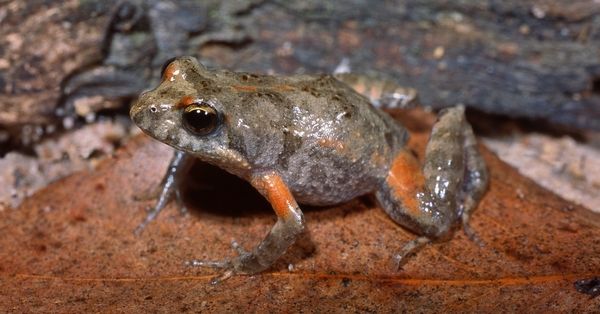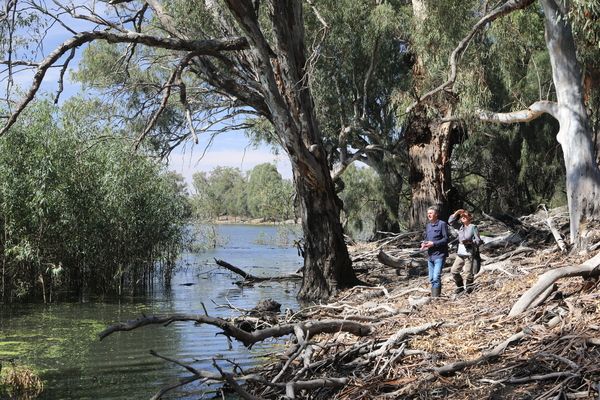Frogs can be very hard to spot! They are very good at hiding among reeds and rushes at the edge of wetlands, rivers, swamps and floodplains. In fact, frogs can often be heard before they are seen.
The Department of Environment Land Water and Planning (DELWP), Frogs Victoria, the University of Melbourne, the Australian Museum, Goulburn Broken Catchment Management Authority (CMA) and North Central CMA are calling on citizen scientists to help record frog calls at wetlands in northern Victoria as part of The Frogs are Calling You project.

Common eastern froglet, by Geoff Heard
The project is an extension to the DELWP Wetland Monitoring and Assessment Program for environmental water (WetMAP) that is collecting data to identify ecological responses to water management and to understand the water regimes needed to maintain and improve wetland habitats, communities and biodiversity.
“Victoria is home to a massive diversity of frogs – about 40 species!” said President of Frogs Victoria, Lynette Plenderleith.
“Wetlands and the wildlife that lives in them are suffering in our drying climate, but some receive water for the environment, which is a water entitlement to help preserve our native ecosystems”
“Because water is so scarce, we need to try to make sure that we are providing the right amount of water, in the right places and at the right time. We are asking people to use the FrogID app to record frog calls in regional Victoria and the information will be used to help us understand where frogs live and breed and when they are most in need of water. In turn, citizen science gives everyone the chance to take part in research and learn more about their local environment and the animals and plants that live there.”
During the program, scientists will investigate how frogs respond to water for the environment - looking at their preferred watering regime and habitat. Citizen scientists can help by visiting wetland sites and recording frog calls using the Australian Museum’s FrogID app.
“Once you’ve signed up to the project and downloaded the app you can head out frogging. Just after dark is a good time to hear frogs and any wetland is a good place to start!” Lynette said.
“The app helps you identify frogs too – when you make a recording it suggests a species, and shows an image with details such as the frog’s calling period and its conservation status. Experts at the Australian Museum verify the recording and confirm the species with you.”
Anyone can become a frog citizen scientist! Find ‘The Frogs Are Calling You’ project on social media or follow this link to find out more: www.frogscalling.org

WetMAP scientists visit a frog monitoring site at Wallpolla Horseshoe Lagoon, by ARI